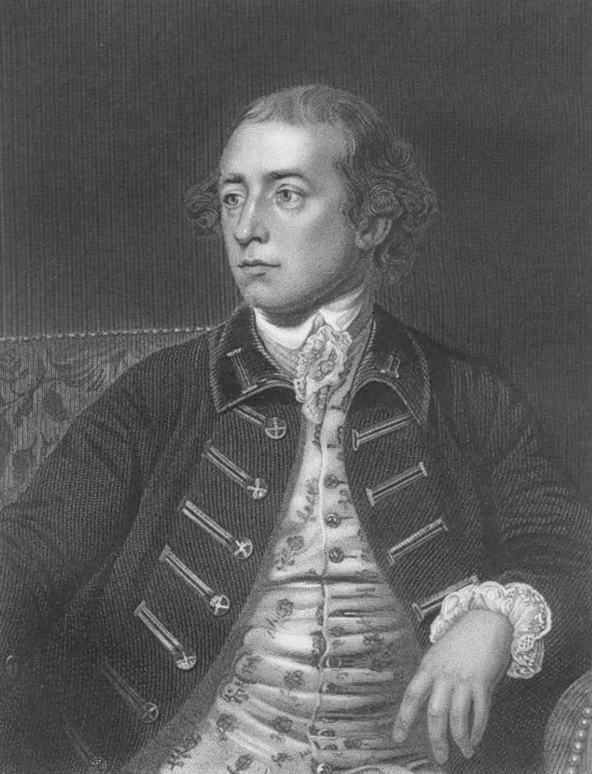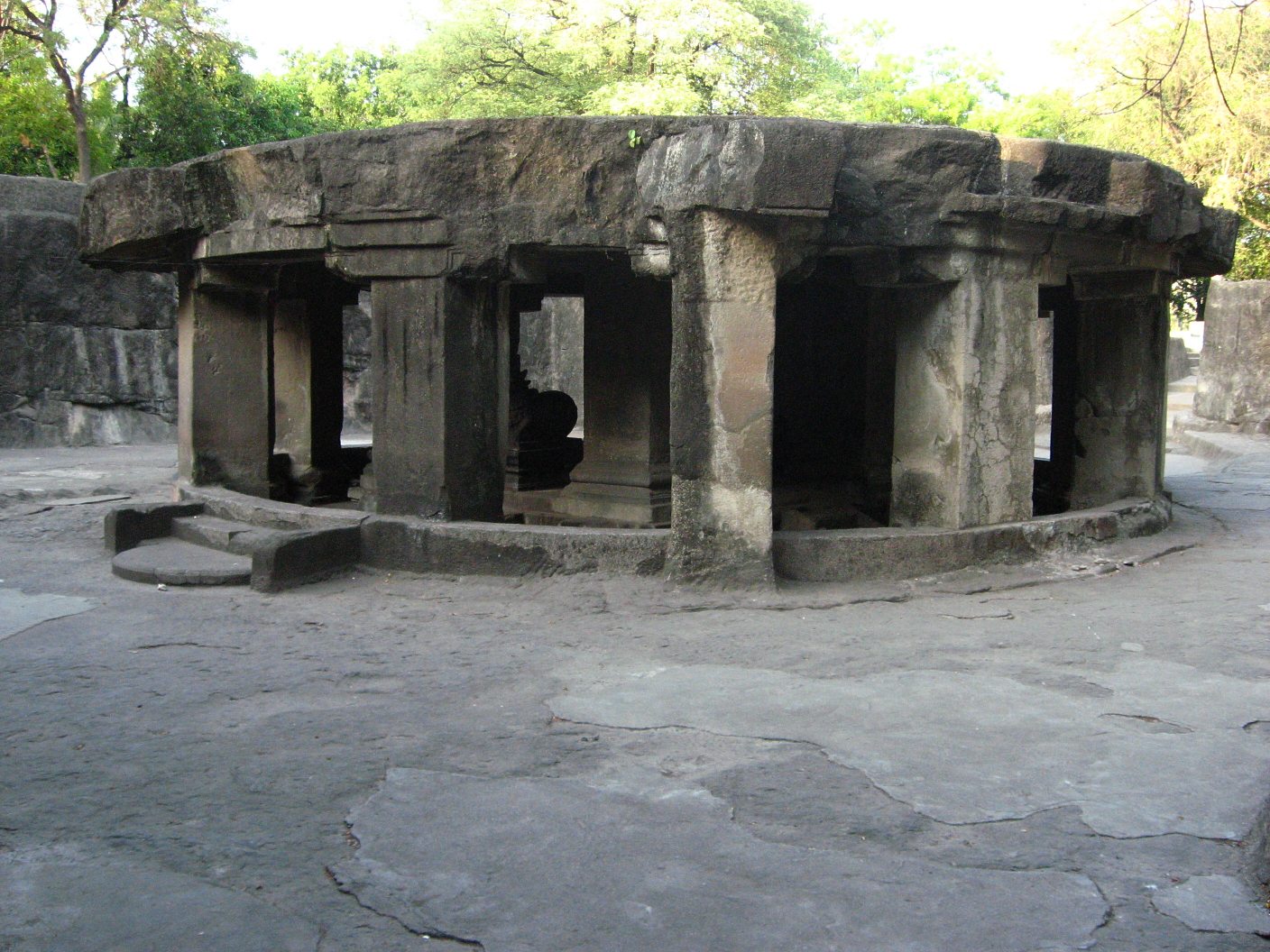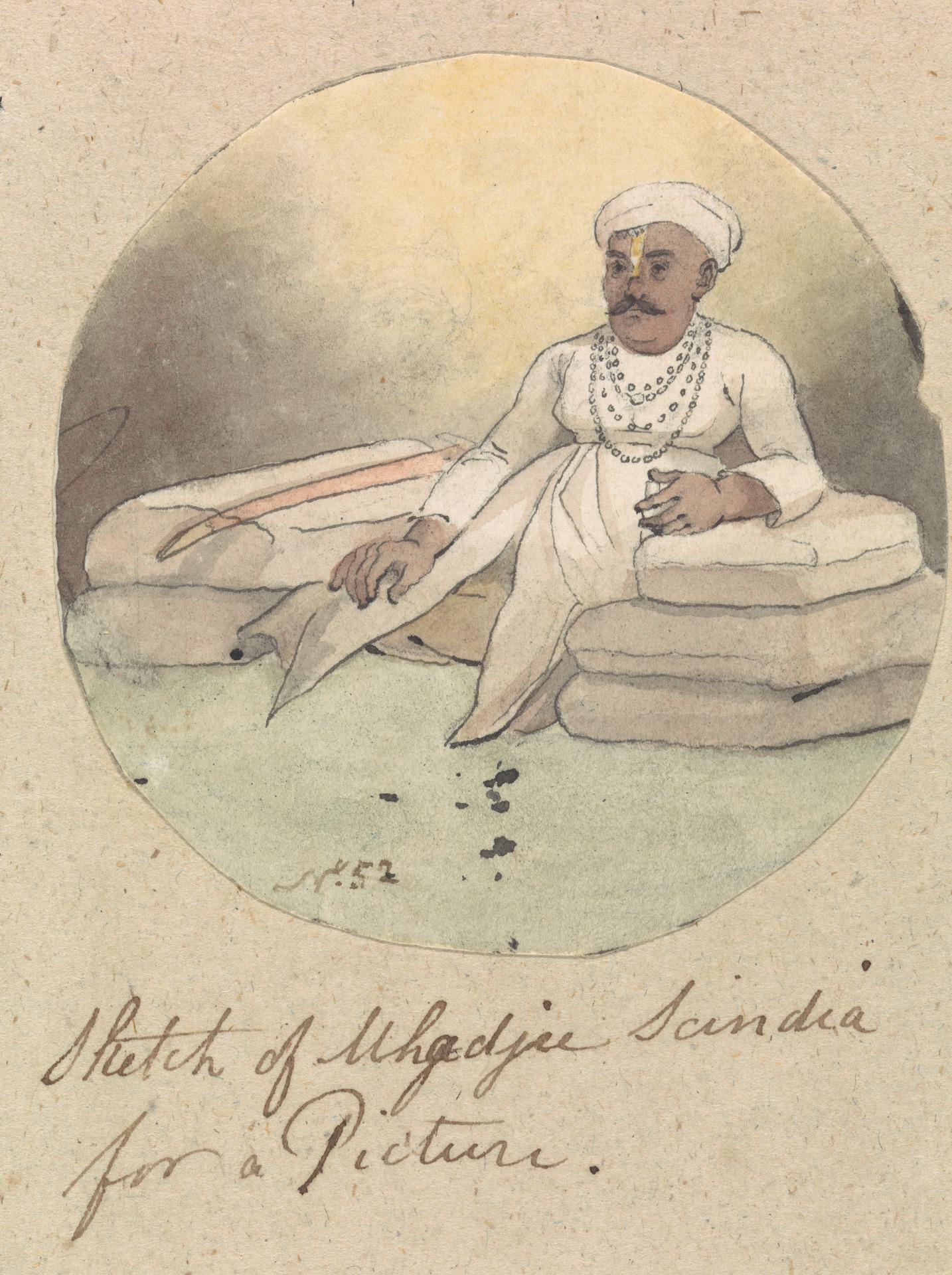|
First Anglo-Maratha War
The First Anglo-Maratha War (1775–1782) was the first conflict fought between the British East India Company and Maratha Empire in India. The war began with the Treaty of Surat and ended with the Treaty of Salbai. As per the treaty, the British and the Marathas would not fight against each other for the next 20 years. The war, fought in between Surat and Poona, saw the British defeated and restoration of positions of both the parties before the war. Warren Hastings, the first Governor-General of Bengal decided not to attack Pune directly. Background After the death of Madhavrao Peshwa in 1772, his brother Narayanrao became peshwa (prime minister) of the Maratha Empire. Narayanrao's palace guards murdered him in August 1773, and his uncle Raghunathrao (Raghoba) became the Peshwa. However, Narayanrao's wife, Gangabai, gave birth to a posthumous son, who was the legal heir to the throne. The newborn infant was named 'Sawai' Madhavrao (Sawai means "One and a Quarter" ... [...More Info...] [...Related Items...] OR: [Wikipedia] [Google] [Baidu] |
Vadgaon Maval
Vadgaon or Vadgaon Maval (formerly spelled Wadgaon or Wargaum) (Marathi: वडगाव मावळ ) is a census town and nagar panchayat in Mawal taluka, Pune district, in the Indian state of Maharashtra. Vadgaon is famous for its Jain and Potoba Maharaj temples and Mhadaji shinde garden. Administration As a Nagar panchayat, Vadgaon is the headquarters for administration of Katavi and is headed by a ''nagaradhasha'' elected representative. At the time of the 2011 Census of India, it was a self-contained nagar panchayat, meaning that it governed no other constituent villages. It is Maval Taluka's main village. It is mainly divided into Chavan Wada, Dhore Wada, Mhalaskar Vasti, Kude Wada, Chavan Nagar, Mali Nagar, Bhilare Wasti, Keshav Nagar.Deccan hill. Demographics India census, had a population of 14,600. Males constituted 52% of the population and females 48%. The average literacy rate was 75%, higher than the national average of 59.5%: male literacy was 80%, and fe ... [...More Info...] [...Related Items...] OR: [Wikipedia] [Google] [Baidu] |
Raghunathrao
Raghunathrao, also known as Ragho Ballal or Raghoba Dada (18 August 1734 – 11 December 1783), was the younger son of Peshwa Bajirao I who served as the 11th Peshwa of the Maratha Empire for a brief period from 1773 to 1774. He defeated Rohillas at the Battle of Delhi (1757), resulting in the Marathas becoming the de-facto rulers of Delhi with Mughal Emperor Alamgir II having no actual power. He also led successful campaigns against the Durrani Empire at Sirhind and Attock and brought Northwestern India and modern day parts of Pakistan mainly Punjab till Peshawar under Maratha rule (1758-59) for a brief period. Ahmad Shah Durrani sought revenge against the Marathas for capturing Punjab and defeating the Durrani armies. He made preparations for another campaign in India. Raghoba asked for a large financial assistance in order to check Abdali's advance which was refused by Peshwa Nana Saheb. Nana Saheb's decision of not sending Raghoba as the main commander of ... [...More Info...] [...Related Items...] OR: [Wikipedia] [Google] [Baidu] |
Peshwa
The Peshwa was the second highest office in the Maratha Empire, next in rank and prestige only to that of the Chhatrapati. Initially serving as the appointed prime minister in the Maratha Kingdom, the office became hereditary when Shahu gave the seat of Peshwa to Bajirao I, Bajirao Ballal. During the reign of Shahu, the office of Peshwa grew in power and the Peshwas came to be the ''de facto'' rulers of the Maratha Confederacy. Eventually, the Chhatrapati title became titular and the main heads were the Peshwas according to the Sangola pact. All Peshwas during the rule of Shivaji, Sambhaji and Rajaram I, Rajaram belonged to Marathi people, Marathi Deshastha Brahmin community. The first Peshwa was Moropant Trimbak Pingle, Moropant Pingle, who was appointed as the head of the Ashta Pradhan (council of eight ministers) by Shivaji, the founder of the Maratha Kingdom. The initial Peshwas were all ministers who served as the chief executives to the king. The later Peshwas held the h ... [...More Info...] [...Related Items...] OR: [Wikipedia] [Google] [Baidu] |
Narayanrao Peshwa
Narayanrao (10 August 1755 – 30 August 1773) was the 10th Peshwa of the Maratha Confederacy from November 1772 until his assassination in August 1773. He married Gangabai Sathe who later gave birth to Sawai Madhavrao. Early life Narayanrao Bhat was born 10 August 1755. He was the third and youngest son of Balaji Baji Rao (also known as Nana Saheb) and his wife Gopikabai. He received a conventional education in reading, writing and arithmetic and possessed a functional understanding of Sanskrit scriptures. He was married to Gangabai Sathe on 18 April 1763 before his eighth birthday. Gangabai Sathe was daughter of Krishnaji Hari Sathe. He was very close to Parvatibai, the widow of Sadashivrao, who took him under her care to lessen her sorrows after her husband's death. His eldest brother Vishwasrao, heir to the title of the Peshwa, died in the Battle of Panipat in 1761 along with Sadashivrao. His father died a few months later and his elder brother Madhavrao took over as ... [...More Info...] [...Related Items...] OR: [Wikipedia] [Google] [Baidu] |
Madhavrao Peshwa
Madhavrao I (formerly known as Madhavrao Ballal Bhat) was the second son of Peshwa Balaji Bajirao and grandson of Peshwa Bajirao I, who served as the 9th Peshwa of the Maratha Empire. During his tenure, the Maratha Empire recovered from losses suffered during the Third Battle of Panipat, known as the Maratha Resurrection. He is regarded as the greatest of all Peshwas by R.C Majumdar. Early life and ascendancy to Peshwa Madhavrao Bhat was the second son of Peshwa Nanasaheb, the son of Bajirao. He was born in Savanur on 15 February 1745. After his father's death, the sixteen-year-old Madhavrao was made the next Peshwa of the Maratha Confederacy. His paternal uncle, Raghunathrao, was to act as regent. Disputes with Ragunathrao On August 22, 1762, Raghunathrao fled to Vadgaon Maval where he started grooming his army against Madhavrao. Raghunathrao's men started looting the nearby villages for warfare, and this act angered Madhavrao. He decided to wage a war against ... [...More Info...] [...Related Items...] OR: [Wikipedia] [Google] [Baidu] |
Governor-General Of Bengal
The governor-general of India (1833 to 1950, from 1858 to 1947 the viceroy and governor-general of India, commonly shortened to viceroy of India) was the representative of the monarch of the United Kingdom in their capacity as the emperor or empress of India and after Indian independence in 1947, the representative of the monarch of India. The office was created in 1773, with the title of governor-general of the Presidency of Fort William. The officer had direct control only over his presidency but supervised other East India Company officials in India. Complete authority over all of British territory in the Indian subcontinent was granted in 1833, and the official came to be known as the governor-general of India. In 1858, because of the Indian Rebellion the previous year, the territories and assets of the East India Company came under the direct control of the British Crown; as a consequence, company rule in India was succeeded by the British Raj. The governor-general (n ... [...More Info...] [...Related Items...] OR: [Wikipedia] [Google] [Baidu] |
Poona
Pune ( ; , ISO 15919, ISO: ), previously spelled in English as Poona (List of renamed Indian cities and states#Maharashtra, the official name until 1978), is a city in the state of Maharashtra in the Deccan Plateau, Deccan plateau in Western India. It is the administrative headquarters of the Pune district, and of Pune division. In terms of the total amount of land under its jurisdiction, Pune is the largest city in Maharashtra, with a geographical area of 516.18 sq km, though List of cities in India by population, by population it comes in a distant second to Mumbai. According to the 2011 Census of India, Pune has 7.2 million residents in the metropolitan region, making it the List of metropolitan areas in India, seventh-most populous metropolitan area in India. The city of Pune is part of Pune Metropolitan Region. Pune is one of the largest IT hubs in India. It is also one of the most important Automotive industry in India, automobile and Manufacturing in India, manufacturin ... [...More Info...] [...Related Items...] OR: [Wikipedia] [Google] [Baidu] |
Surat
Surat (Gujarati Language, Gujarati: ) is a city in the western Indian States and territories of India, state of Gujarat. The word Surat directly translates to ''face'' in Urdu, Gujarati language, Gujarati and Hindi. Located on the banks of the river Tapti near its confluence with the Arabian Sea, it used to be a large seaport. It is now the commercial and economic centre of South Gujarat, and one of the largest urban areas of western India. It has well-established diamond and textile industry, and is a major supply centre for apparels and accessories. About 90% of the world's diamonds are cut and polished in Surat. It is the second largest city in Gujarat after Ahmedabad and the List of most populous cities in India, eighth largest city by population and List of million-plus urban agglomerations in India, ninth largest urban agglomeration in India. It is the administrative capital of the Surat district. The city is located south of the state capital, Gandhinagar; south of A ... [...More Info...] [...Related Items...] OR: [Wikipedia] [Google] [Baidu] |
Treaty Of Surat
The Treaty of Surat (6 March 1775) was a treaty by which Raghunathrao, one of the claimants to the throne of the Peshwa, agreed to cede Salsette and Bassein Fort to the British in consideration of being himself restored to Poona. The military operations that followed are known as the First Anglo-Maratha War. Warren Hastings, who in his capacity of Governor General claimed a right of control over the decisions of the Bombay Government, annulled the Treaty of Surat and sent his own agent to negotiate a very different new pact, the Treaty of Purandhar (1776) in which Ragoji offered help to the British in exchange for becoming king of Maratha. ReferencesThe Indian Empire By William Wilson Hunter, p. 391 Surat 1775 treaties History of Surat Surat Surat (Gujarati Language, Gujarati: ) is a city in the western Indian States and territories of India, state of Gujarat. The word Surat directly translates to ''face'' in Urdu, Gujarati language, Gujarati and Hindi. Located on the b ... [...More Info...] [...Related Items...] OR: [Wikipedia] [Google] [Baidu] |
British East India Company
The East India Company (EIC) was an English, and later British, joint-stock company that was founded in 1600 and dissolved in 1874. It was formed to Indian Ocean trade, trade in the Indian Ocean region, initially with the East Indies (South Asia and Southeast Asia), and later with East Asia. The company gained Company rule in India, control of large parts of the Indian subcontinent and British Hong Kong, Hong Kong. At its peak, the company was the largest corporation in the world by various measures and had its own armed forces in the form of the company's three presidency armies, totalling about 260,000 soldiers, twice the size of the British Army at certain times. Originally Chartered company, chartered as the "Governor and Company of Merchants of London Trading into the East-Indies," the company rose to account for half of the world's trade during the mid-1700s and early 1800s, particularly in basic commodities including cotton, silk, indigo dye, sugar, salt, spices, Potass ... [...More Info...] [...Related Items...] OR: [Wikipedia] [Google] [Baidu] |
Tukoji Rao Holkar
Tukoji Rao Holkar (26 June 1723 – 15 August 1797), belonging to the Holkar clan of the Maratha Empire was the feudatory ruler of Indore (r. 1795–1797). Tukoji Holkar was the adopted son of Malhar Rao Holkar, he was the second son of Shrimant Tanuji Holkar, a nephew of Malhar Rao Holkar. Thus he was also the grand-nephew of Malhar Rao Holkar. He married two wives. He had four sons Kashi Rao, Malhar Rao Holkar II, Yashwant Rao, and Vithoji Rao. Life and career After the demise of Ahilyabai Holkar, Tukoji Rao was the only suitable person who could preserve the splendour of Holkar kingdom intact. He became the fourth ruler of the kingdom for a short period from 1795 to 1797 and protected the province as a courageous soldier. It was a time of crisis when Tukoji Rao received the responsibility of the Holkar Kingdom. Khanderao, husband of Ahilyabai had already lost his life in Kumbher war of 1754. Tukoji Rao Holkar was the most trustworthy commander-in-chief of Shreemant ... [...More Info...] [...Related Items...] OR: [Wikipedia] [Google] [Baidu] |
Mahadji Shinde
Mahadaji Shinde (23 December 1730 – 13 February 1794), later known as Mahadji Scindia or Madhava Rao Scindia, was a Maratha statesman and general who served as the Maharaja of Gwalior from 1768 to 1794. He was the fifth and the youngest son of Ranoji Rao Scindia, the founder of the Scindia dynasty. He is reputed for having restored the Maratha rule over North India and for modernizing his army. Mahadji was instrumental in resurrecting Maratha power in North India after the Third Battle of Panipat in 1761, and he rose to become a trusted lieutenant of the Peshwa, leader of the Maratha Confederacy. Along with Madhavrao I and Nana Fadnavis, he was one of the three pillars of Maratha Resurrection. He modernized his army under adventurers like Benoît de Boigne, which allowed Maratha dominance of North India. During his reign, Gwalior became the leading state in the Maratha Confederacy and one of the foremost military powers in India. After accompanying Shah Alam II to Delhi in ... [...More Info...] [...Related Items...] OR: [Wikipedia] [Google] [Baidu] |







